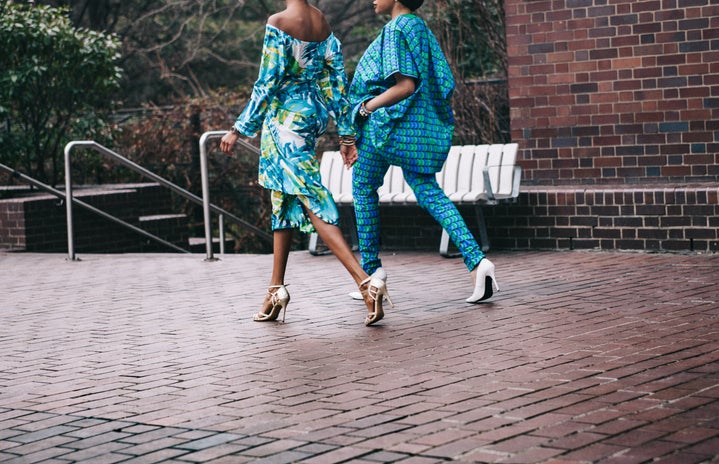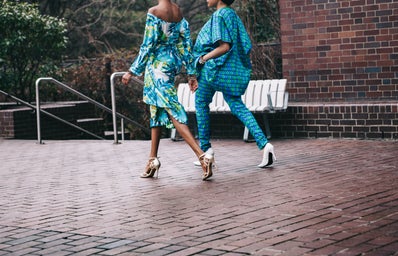On Thursday, March 22nd, Muhlenberg Hillel hosted an Israeli fashion show sponsored by both Hillel and Mishelanu. This show displayed the history of Israel through the clothes which people wore. It spanned from the time of the Kibbutz in 1909 to the 2018 street fashion we see today. Hillel brought in Israeli fashion expert and lecturer, Liraz Cohen Mordechai, or Liri. She runs a popular company known as “Fashionating by Liri.” I had the privilege of not only helping to organize this event, but also modeling in it.
Liri began the night with a quote by Mark Twain which I really believe guided the meaning making process of this show:
“Naked people have little or no influence in society”
On the surface, Liri gave the audience insight into a fashion culture that they might not be familiar with. Delving deeper, Liri taught the audience about how fashion is history. Fashion is informed by the socio-political conditions that exist within the environment in which style is curated. In addition, fashion has the potential to influence society and change the perceptions of a nation.
For example, Liri presented the styles of people who all lived during 1909 in Israel. Some of the looks were from Tel Aviv and some were from the kibbutz. The kibbutz looks were practical and easy to move and work in.
Photo courtesy of Stephanie Levine
On the other hand, the Tel Aviv looks were stark white and almost bourgeois in their appearance.
Photo courtesy of Stephanie Levine
Liri pointed to this as an example of a conflict in society between “individualism and collectivism,” or those who wanted to live in Israel and those who wanted to build Israel.
Adding to this motif, Liri also told the story of one kibbutznik, Miryam Zinger, who defied the expectations of the kibbutz by wearing a red scarf in her hair. She used that, and a pair of particularly controversial red pants, to symbolize her position as a feminist. While her actions were considered scandalous at the time, she made huge strides toward gender equality, simply through using what she wore.
Photo courtesy of Stephanie Levine
Another theme that ran through the show was of the conflict between “ours vs. theirs.” Israel is largely a country of immigrants and, as a result, there are many different cultures within the country. Sometimes, it was difficult for Israelis to truly distinguish what aspects of their “Israeli style” were influenced by the outside and what organically arose within the country. In the fashion show, there were influences from Yemen, Europe, Israel’s Middle Eastern neighbors, and many many more.
Military influence on fashion was also prevalent. For anyone who is familiar with Israeli culture, military service in the IDF is an integral part of every young adult’s life. This could be seen in much of the Israeli fashion post-1967. Men and women both had uniforms which they would often wear off-duty because of their personal pride (and, according to Liri, it did not hurt the men with the ladies). Today, Israel is seeing much of the military style and color palate being integrated into everyday looks.
Photo courtesy of Stephanie Levine
Looking to the future of Israeli fashion, Liri seemed to indicate that fashion designers today are looking to display something uniquely Israeli on the runway. Israel is practically a brand new country (almost 70 years old) and it is still trying to form its own identity, separate, but somehow derived from, its immigrant roots. I believe that this is what we will be seeing on Israeli runways in the future. Israeli fashion designers are definitely ones to watch.
All in all, this show was extremely informative and entertaining to both watch and be a part of. The models seemed to have fun representing Israel and that was honestly the cherry on top of the cake. Personally, I had a great time modeling and I can’t wait to see what creative programming Hillel has in store for the future.

